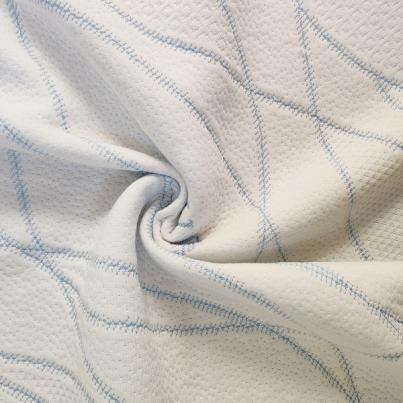When choosing a fabric to adorn a living room, a bedroom, or any other part of the house or important space, there are many factors that make us lean towards deciding on one or another. However, the starting point should always be what the fabric will be used for.
Why? Because we have to know what type of material we will need and can use. If, for example, silk curtains are exposed to constant sunlight, in six months, the color will have started to fade because of the strength of the light.
To make sure this doesn't happen, one of the most important factors to consider when distinguishing (and choosing) a good-quality fabric from one that is not and finding an ideal location for it is the experience and advice of the sales representative.
In the list below, we elaborate on this, along with 3 other decisive factors for choosing the right fabric for your needs. We know the decision isn't easy for people with no experience in textiles, but we feel that the following indications will be of great help and guidance.
1. Feel and drape: fabric weight
The senses play a great role when it comes to distinguishing what kind of product we have our hands. When our eyes keep returning to a specific design, when we feel like caressing a certain fabric, when we touch it and it transmits the quality and elegance that our eyes noticed at first glance, that's a sure sign that we have a good fabric on our hands. Its feel and its drape, its bearing, weight, and elegance, are all synonymous with quality.
The same thing happens with sound. That's right: a good fabric has a characteristic sound. When you ruffle and stretch a fabric - a good fabric - like an accordion, it sounds tough, firm, and satisfying, not rough or scratchy. It generates a certain tension and causes the hands to pause.
2. Durability and resistance.
The resistance of a fabric or an upholstery can be measured and expressed in figures and data. For example, the Martindale test is used to determine the number of life cycles of a textile, marking the difference between a bad and a good fabric at 15,000 cycles. Over 15,000 cycles - a figure that actually appears on the labels of the fabrics - is considered to be the mark of a high quality fabric.
One quality that is evident during these cycles (and is also palpable after repeated cleaning of the fabric) is whether it retains its condition, color, shape, and texture after each wash, maintaining its initial characteristics.
3. Technical qualities: more than meets the eye.
Some aspects associated with a good fabric go way beyond the aforementioned details: they cannot be appreciated by the naked eye, they cannot be touched, and they cannot be perceived at first glance unless you know what else these fabrics bring to the table.
Technical aspects include:
Outdoor fabrics with a Tempotest guarantee and Teflon finish. The colors of these textiles do not fade in sunlight, they repel water and oil, and they are also resistant to mold (rot-proof textiles).
Flame-retardant fabrics. These certified fabrics are inflammable and are perfect for installation in collective spaces: public spaces in general, hotels, auditoriums, and sports centers, for example.
Acoustic fabrics, which help improve the acoustic qualities of spaces, including improved insulation from exterior sounds.
Indantheren-dyed fabrics. This is the most durable dye in existence and the only one that can be used with cotton fabrics. It is used for tablecloths and other textiles which require constant washing at high temperatures.
Post time: Aug-15-2022








